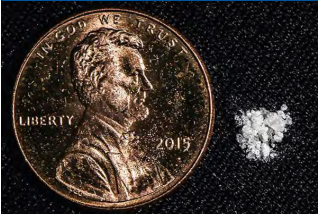Top executives of a US pharmaceutical company have been arrested for allegedly scheming to overprescribe the highly addictive opiate fentanyl, one of the main narcotics behind a national drug epidemic that is likely funding a bloody cartel war in neighboring Mexico.
A number of former executives and managers of Insys Therapeutics, Inc. were arrested on December 8 for leading an allegedly illegal scheme to greatly increase prescriptions of fentanyl-based pain medication across the United States. Those arrested include former CEO and President of the company, Michael L Babich.
Insys’ “powerful, and potentially dangerous” fentanyl spray, “Subsys,” was approved in 2012 only to treat a small market of cancer patients, the indictment states (pdf).
Nevertheless, for years Insys allegedly bribed medical practitioners with hundreds of thousands of dollars to hand out a large number of Subsys prescriptions, “most often for patients who did not have cancer.”
SEE ALSO: Coverage of Heroin
As a result, the company “dramatically increased the volume of prescriptions written for the Fentanyl Spray…generating substantial profits,” prosecutors say.
The bribes and kickbacks, which allegedly occurred between 2012 and 2015, were usually disguised as payments for the practitioner giving speeches at marketing events. Insys employees also allegedly lied to insurers who were unwilling to grant payment for Subsys being prescribed to non-cancer patients, in order to obtain authorization.
Following the arrests, Federal Bureau of Investigation (FBI) Special Agent Harold Shaw said that the executives’ scheme to “sell a highly potent and addictive opioid…contributed to the growing opioid epidemic” in the United States.
In 2015, Insys sales reached $331 million, Forbes reported, and the company’s founder John Kapoor is among the country’s wealthiest billionaires.
Opioid-related deaths in the United States rose 15 percent from 28,647 in 2014 to 33,091 in 2015, according to data by the US Center for Health Statistics accessed by InSight Crime. Specifically, the number of synthetic opioid overdoses — many of them fentanyl-related — rose 73 percent from 5,544 in 2014 to 9,580 in 2015.
InSight Crime Analysis
Fentanyl, thought to be up to 100 times more powerful than morphine, was originally developed as a pain killer but has since become a key drug of abuse in the US opioid epidemic, and is produced both legally and illegally. The aggressive prescription of this and other legal opioids such as OxyContin — and the questionable strategies used by pharmaceuticals to protect the industry — have been linked to a surge in addiction, fatal overdoses, and the growth of the black market. Indeed, US seizures of fentanyl leapt from 934 in 2013 to more than 13,000 in 2015.
As InSight Crime has reported in the past, the epidemic in the United States had indirectly fed organized crime further south, prompting Mexican, Guatemalan and Colombian criminal groups to produce more heroin and sparking conflict between competing groups. A similar dynamic can be seen with fentanyl, which is considered to be even more lucrative than heroin.
Illegally produced versions of fentanyl mainly come from China and, to a lesser extent, Mexico. According to DEA spokesman Russ Baer, the Sinaloa Cartel and the Jalisco Cartel – New Generation (CJNG) have boosted fentanyl production in response to US demand. These two criminal organizations are currently engaged in a violent battle over local and international criminal markets.
With organized crime-related murders in Mexico on the rise and the fentanyl market set to expand further, this exceptionally profitable trade could add fuel the Mexican conflict in future.
Graphic from the DEA’s National Drug Threat Assessment 2016 (pdf)


